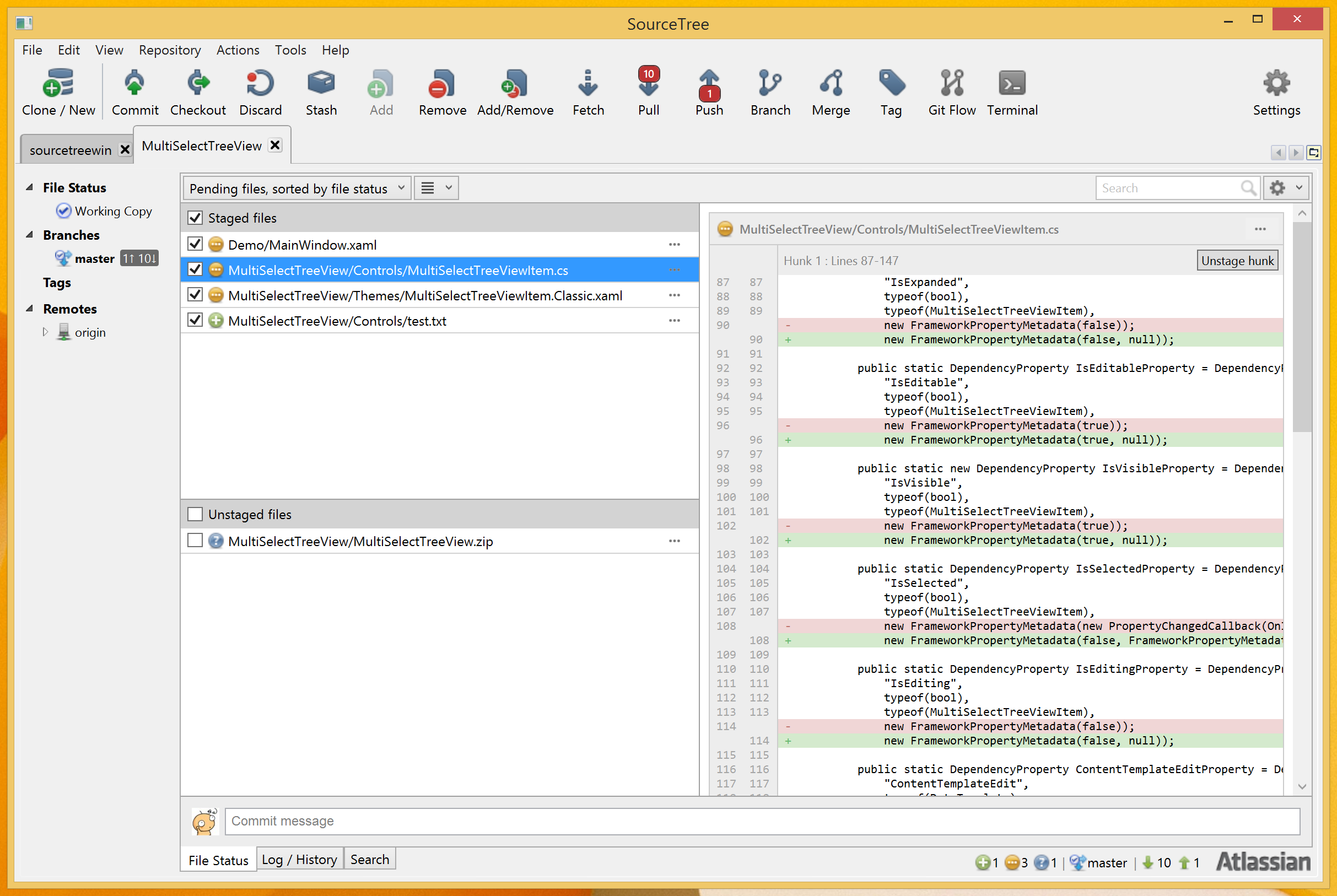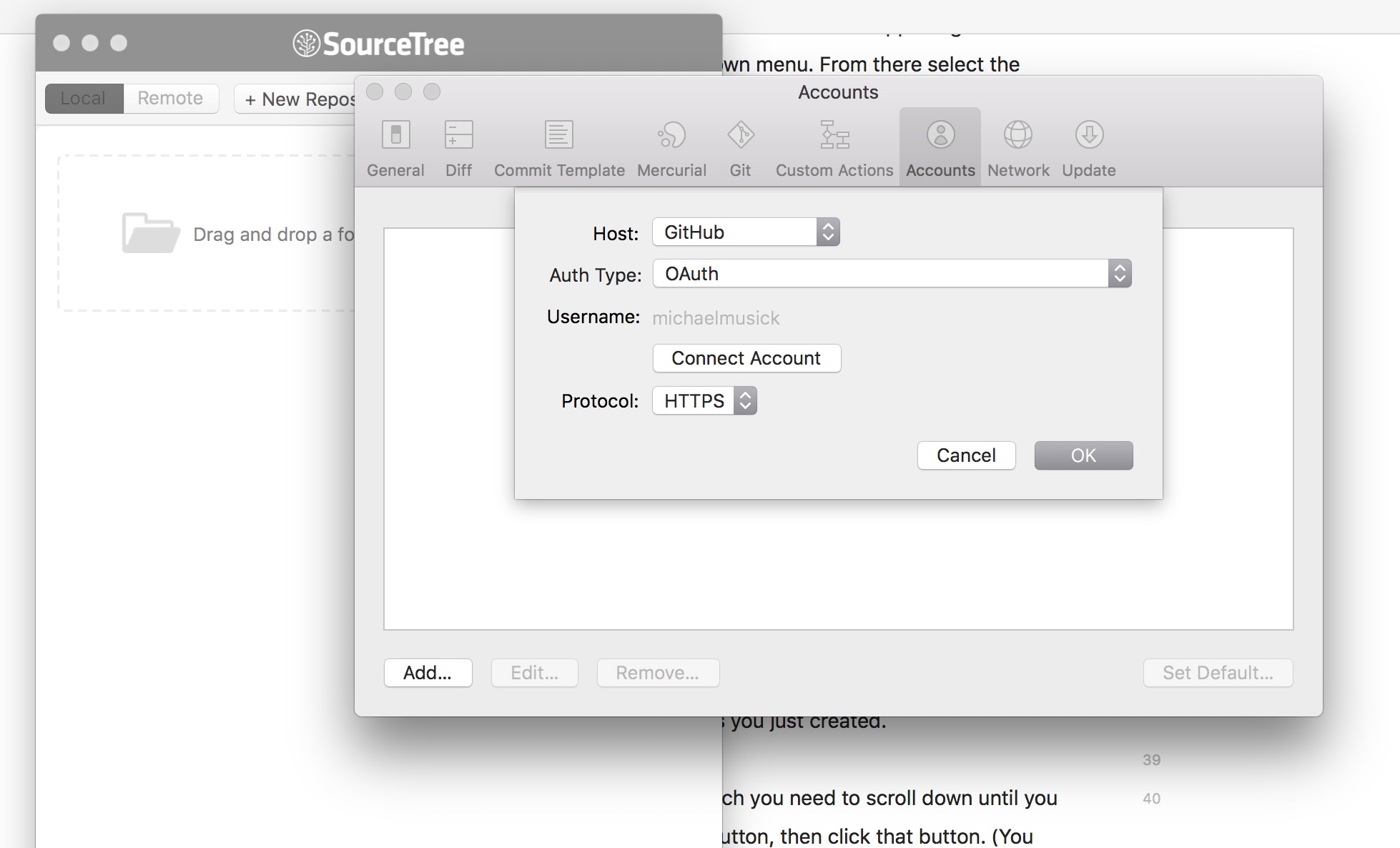
- #GITHUB AND SOURCETREE APP HOW TO#
- #GITHUB AND SOURCETREE APP GENERATOR#
- #GITHUB AND SOURCETREE APP UPDATE#
- #GITHUB AND SOURCETREE APP CODE#
- #GITHUB AND SOURCETREE APP PASSWORD#
#GITHUB AND SOURCETREE APP UPDATE#
This port will provide FreeBSD users with multi modifier protection, project quotas, encrypted datasets, allocation classes, vectorized raidz, vectorized checksums, and various command line improvements.įreeBSD Quarterly Status Update With FreeBSD having gone all the way to 12, it is perhaps useful to take a look back at all the things that have been accomplished, in terms of many visible changes, as well as all the things that happen behind the scenes to ensure that FreeBSD continues to offer an alternative in both design, implementation, and execution.
#GITHUB AND SOURCETREE APP CODE#
Brian Behlendorf has graciously encouraged me to add FreeBSD support directly to ZoL so that we might all have a single shared code base.Ī port for ZoF can be found at Before it can be committed some additional functionality needs to be added to the FreeBSD opencrypto framework. This state of affairs has led to a general agreement among the stakeholders that I have spoken to that it makes sense to rebase FreeBSD’s ZFS on ZoL. While working through the git history of ZoL I have also discovered that many races and locking bugs have been fixed in ZoL and never made it back to Illumos and thus FreeBSD. Earlier this year Delphix announced that they will be moving to ZoL: This shift means that there will be little to no net new development of Illumos.

In the past few years the vast majority of new development in ZFS has taken place in DelphixOS and zfsonlinux (ZoL). FreeBSD has regularly pulled changes from Illumos and tried to push back any bug fixes and new features done in the context of FreeBSD. Headlines The future of ZFS in FreeBSD The sources for FreeBSD’s ZFS support are currently taken directly from Illumos with local ifdefs to support the peculiarities of FreeBSD where the Solaris Portability Layer (SPL) shims fall short. And you can like my Facebook page, A Word From Net to get notification on latest posts and to show support.The future of ZFS in FreeBSD, we pick highlights from the FreeBSD quarterly status report, flying with the raven, modern KDE on FreeBSD, many ways to launch FreeBSD in EC2, GOG installers on NetBSD, and more. If you have any questions or suggestions, please comment below.

I hope my tutorial can help you on connecting GitHub with SourceTree successfully. Now go back to your GitHub repository page and try to clone your repository with SSH way.įinally, you will able to clone your own repository successfully. Then, click on Add Key to add the private key you saved previously. Later, click on a small monitor icon in your taskbar.Īs a result, the Pageant Key List will popup. Now back to SourceTree, go to Tools and click on Launch SSH Agent.
#GITHUB AND SOURCETREE APP GENERATOR#
Give a title to your SSH key, and copy your public key from your PuTTY Key Generator into the Key’s field. Next, click on SSH and GPG keys to add New SSH key. Now login to your GitHub account, click on your avatar icon on the top right-hand side, then click on Settings. Then, save your public key and private key.ĭon’t close your PuTTY Key Generator.
#GITHUB AND SOURCETREE APP PASSWORD#
Move your mouse cursor within the blank space to continue the private and public key generation process.Īfter you done with the SSH key generation, set a password for your SSH key. Then, click on Generate in PuTTY Key Generator. In order to generate SSH key pair, go to Tools and click on Create or Import SSH Keys. On the other hand, private key will be added to Pageant Key List in your computer. Firstly, you need to generate a pair of SSH key.

The second method is connecting GitHub with SSH Key. Then click on OK.Īfter this, you can view all your repository in SourceTree when you clicking on your remote account. If you had login to your GitHub account in this browser previously, this step will be skipped.įinally, click on Authorize atlassian to authorize SourceTree to access your GitHub account.Īfterwards, you should see a successful message, Authentication OK. Then click on Refresh OAuth Token.Įventually, it will open up a webpage automatically with browser and ask for login details for your GitHub account. Preferred protocol and authentication would leave it as default which is HTTPS and OAuth. This is the simplest method to connect GitHub with SourceTree. You authorize SourceTree to connect your GitHub account with OAuth. The first method is connecting GitHub with remote account. Method 1: Connect with Remote Account via OAuth You can choose any of these two methods based on your preference. In this blog post, I am going to discuss two ways of connecting GitHub with SourceTree.
#GITHUB AND SOURCETREE APP HOW TO#
Today, we will learn how to connect GitHub with SourceTree.


 0 kommentar(er)
0 kommentar(er)
